If suddenly your tire is flat, the solution is to fix it. However, which method and how to do it is another story that needs attention.
One of the fastest ways you can do this is to plug in the tires, using specialized materials to fill in the air leaks. So, how long can you drive on a plugged tire?
The safe travel distance for the tire plugs will be about 8 miles. Of course, the shorter you sit on it, the better.
The following article will help you understand more about this issue.
How Long Can You Drive On A Plugged Tire?According to many studies, 8 miles is a safe distance to drive on a plugged tire.
Plugging is not a long-term fix; it just keeps the wheel moving for the time it takes to find a service center. Plugged tires do not move well on long trips; the puncture location also has a significant impact on the life of the plugged one.
The plugging method is done through many different stages, requiring the worker to have a high level of skill, ensuring the accuracy and certainty of the studs.
First, you need to zone the area marked with a hole, polishing friction around that area to clean the area about to be repairable.
Use a professional plug to fill the air hole. This type of nail can be adaptable to the size of the hole.
Finally, firmly secure the plugs through heat and cut off the excess wire.
Depending on many factors, some people point out that its life can be up to 25,000 miles in some cases. But, this is not a long-term option.
Experts recommend that this solution is only temporary for about 8-10 miles. In other words, try to find the nearest repair shop.
When Should You Plug Tires?You can plug in the tire when it is flat, but it is necessary to determine the correct condition that the wheel is experiencing to make the appropriate repair.
When the puncture site is in the middle or on the tread surface, you can choose the method of plugging or patching as you like. As for the position like the sides of the shoulder, this is impossible.
Next is to measure the severity of the puncture. When the wound width is not more than 6mm, and the air leaks are not too close, the above method is still a valid good show.
Does Plugging A Tire Ruin It?Although the process seems rudimentary, you don’t need to worry too much about this, from cleaning to using tools to seal the air holes.
But this is effective in emergency repair, and the plug won’t damage the tire. It can keep the air inside the wheel for quite a long time if stored properly.
How Long Do You Need To Wait After Plugging The Tire?The process of installing tires until the minute is complete, and you just need to wait for a few minutes. Unlike patching or combination methods, the tire needs to be completely removed for ease of work.
After preparing all the specialized tools and performing a few simple steps, it has almost completed the repair process with the plug.
If you need absolute assurance, wait for the glue to dry completely to determine if the source of shrinkage is released or not, then continue rolling.
Maybe, unlike patching a car, you need to determine the correct hole, altogether remove the foreign object from the wheel, and then perform the plug-in operation, and you’re done.
When inserting the cord into the hole, use a firm hand and dexterity to keep the spot airtight.
Plug better than the patched tire?Both methods yield the same quality. However, if it is necessary to compare them, they are different at repair time. Quick, cheap plug repair time is about 10-15 minutes, depending on the skill and size of the wound to fix it effectively.
The patching goes through many stages, and it is necessary to altogether remove the tire from the rim for convenient viewing, cleaning, and processing, which takes nearly 30 minutes to complete.
You see, both repair methods have their pros and cons. To force the choice of a temporary solution, perhaps plugging in would be much more appropriate.
The price depends on many factors, from the service choice center to the quality of the plug you want to use. But don’t worry, only $10-$20 is not too expensive for a dedicated car patch. Many places even have a warranty for customers when using the service.
Can you plug a tire with a screw in it?Yes, you can; in some reluctant cases, people use a screw to replace the plug wire. If the hole is in the wheel well, and the wound size is quite similar to the screw hole, you only need to perform a few small tricks to insert the screw into the hole to seal the air leak.
How much can your car move? It depends on the length of the screw you put in the tire. But on average, it only fluctuates about 10 miles because this is not a specialized tool.
But on average, it only fluctuates about 10 miles because this is not a specialized tool.
Plugging in the tire as a whole is one of the quick and effective solutions, helping you to solve tire damage problems in a short time. However, grasping important information is also essential to ensure safety.
The above article is about problems related to the field of repairing damaged tires. Hopefully, the above knowledge will help a little when you encounter a similar situation. If you have any questions, please leave a comment; we will answer you as soon as possible. Thank you for reading!
This post was last updated onTire plugging is the fastest method to repair a punctured car. Tire plugging uses a cord to prevent the airhead from escaping. If you are an experienced person, you can avoid damage to your car with simple tips.
So, how long does a tire plug last? Most manufacturers say that plug versions can last 7-10 years if installed correctly.
Yet, this number is meant as a reference because you can’t always fix it perfectly. The article gathers useful knowledge and some of the most frequently asked questions about tire plugs. Let’s scroll down to read more information!
Buy Best Tire Repair Kits at Amazon.com
What Is A Tire Plug?It is the primary tool in the repair by plugging method. From the outside, it looks like a standard wire, and the structure is quite remarkable; it is a sticky object; depending on the case, the item can expand or contract to match the size of the hole.
Its working principle is also quite simple: after being inserted into the tire, the plug wire will sense the pressure, determine the shape of the wound, and then automatically expand to adapt.
In addition, the material that makes the wire must be guaranteed to meet the standards, confirming the certainty so that after the air is pumped in, there will be no problems.
There is no denying the convenience that the plug method brings, and you can even repair it without removing the tire from the rim. You can even plug in the tire in some exceptional cases, even when the wheels are connected.
How Long Does A Tire Plug Last?When a vehicle is repaired correctly and maintained, a plug’s life span can last up to 7-10 years. It is an unbelievable number for a wheel that has been repairable.
However, manufacturers advise users not to overdo patching like this in practice. When using too many repair measures, the impact will affect the inherent functions, causing deflation and explosion.
When traveling on the road, the car’s wheels have problems, do not rush to decide when the experience is not proficient; the best way is to take the car to a repair center to have expert advice on the appropriate repair method.
Is Plugging A Tire A Good Idea?Buy Best Tire Repair Kits at Amazon. com
com
Plugging or patching is only a temporary measure before you have enough time to change into a new tire. The life of a tire after plugging can last from 7-10 years or 25,000 miles; no one can be sure that there will not be any problems.
Plugging in tires will be a good idea, even effective if the wheel is in an emergency that needs to be moved.
Is It Safe To Plug In A Tire?You can safely use your plugged-in tires when traveling in a specific section of the road. Unlike a spare tire, which has a short life, it is possible to prevent air from escaping through a previous puncture completely with a plug repair method.
Via many surveys, experts think there is a better measure than a plug – radial patch. It is a suitable method available on almost all popular tires on the market.
The process takes about 30 minutes while using a wire to insert the air hole takes up a few minutes. Both must be vulcanized to reinforce and increase the rubber surface’s certainty.
As long as the wound has adequately been reinforced, you are entirely safe traveling by car with tires. The safest time to use is not too long from when you repair using the above method.
Besides, some notes have also ensured stability when operating this type.
However, do not drive when there is a wound near the wall or on the side of the wheel; if the plug diameter exceeds ¼ inch, it is best to replace the tires.
Finally, the body’s weight, do not use plug tires to carry heavy objects; this inadvertently puts pressure on the wheels when the tires are weak.
How To Plug In A Tire?Here are some ways to help you better understand the plugging process.
Step 1: Locate the leak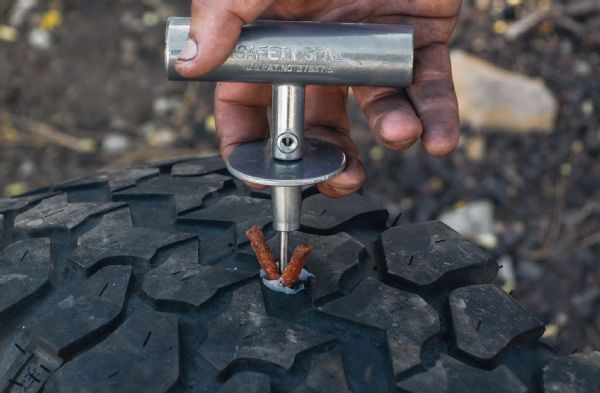
This step does not require you to remove the wheel altogether, but you can use a jack to support the wheel’s weight, so it is pretty easy to do the following steps.

The above article has provided you with knowledge related to plugging or manipulations to perform this process. Hopefully, it will help you when you encounter a similar situation.
This post was last updated on
Vladimir Gavrilov
Estimated reading time: 4 minutes
130791
Category: Service Auto
The main component of winter tires that affects their performance is the rubber compound, not the tread pattern and not the number of studs, as you might think.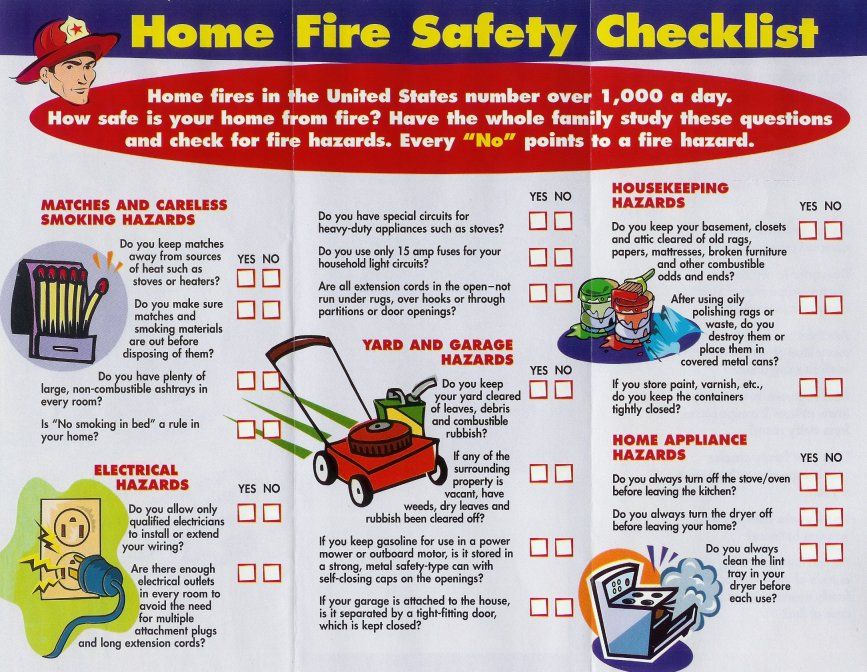 The performance of rubber is affected not only by the natural wear of the tread during trips, but also by chemicals, fuels and lubricants, and simply by the sun's rays that violate the structure of the tire material. nine0005
The performance of rubber is affected not only by the natural wear of the tread during trips, but also by chemicals, fuels and lubricants, and simply by the sun's rays that violate the structure of the tire material. nine0005
Rubber has many additives, especially in the protective layer, designed to hold the load and resist wear during operation. The characteristics of the material depend on chemical inclusions.
Naturally, over time, the tire ages and loses its properties, regardless of the mileage. It is exposed to chemicals poured on the roads by the ton. In addition, washer fluid and oil from passing trucks are on the pavement. These substances are absorbed into the tires of the wheels and violate the composition of the mixture. Rubber loses its former consistency, and its performance is distorted. The elasticity of the composition decreases. Over time, cracks form between the lugs, which become pockets of increased wear. Chemicals penetrate into them and contribute to even greater damage to the already inner layers of the tire.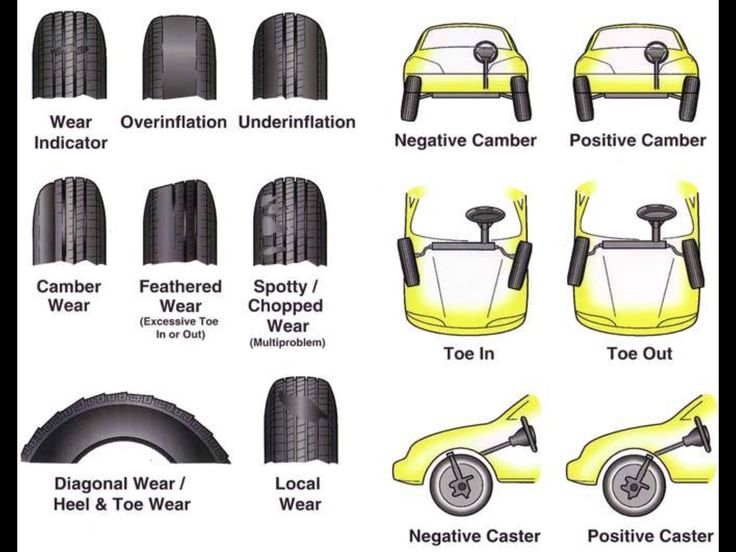 Cord threads begin to tear and burst. Through cuts, the chemical suspension adheres to the metal threads of the frame, which also fail over time. nine0005
Cord threads begin to tear and burst. Through cuts, the chemical suspension adheres to the metal threads of the frame, which also fail over time. nine0005
The role of solar radiation in the destruction of rubber is also great. In general, the old tire has a different strength and coefficient of adhesion to the surface, which is why its effectiveness on the road decreases.
Typically, tire manufacturers define the service life of their products as 5-6 years. Michelin claims a 10-year term, Nokian too. An important point: the beginning of the service life is not the date of sale, but the date of manufacture. If the tire has lain for a whole year in storage, then it is still considered that its characteristics are no longer the same as those of a new one. And the more time has passed since manufacture, the worse the rubber becomes. If the tire was damaged, received cuts or punctures, then the service life is sharply reduced. After a puncture, it is not recommended to drive for more than two years. nine0005
nine0005
In addition to the aging of the rubber compound, the tread itself also wears out. The average tread depth of a new summer tire is 8 mm. In winter, it is slightly larger and exceeds 10-12 mm. In addition, the so-called lamellae are applied there, that is, “suckers” that spread over the surface of the ice and create a sticking effect. They are much softer than the rough lugs of a winter tread and, with active mechanical action, quickly lose part of the material. In addition, the tread grooves are designed to divert not only water, but also snow masses. That is why winter tires should have a higher tread. nine0005
The requirements for the operation of winter tires are contained in the Technical Regulations of the Customs Union, as well as in the annex to the SDA entitled "On the admission of vehicles for operation and the duties of officials to ensure road safety." Section 5.1 provides more detailed tire requirements.
If the wheel does not have a wear indicator, the tread depth is measured with a caliper. The minimum tread depth of summer tires for different categories of vehicles must be:
The minimum tread depth of summer tires for different categories of vehicles must be:
for categories L - 0.8 mm;
for categories N2, N3, O3, O4 - 1 mm;
for categories M1, N1, O1, O2 - 1.6 mm;
for categories M2, M3 - 2 mm.
The remaining tread depth of winter tires designed for use on icy or snowy road surfaces, marked with the letters “M+S”, “M&S”, “M S”, must be at least 4 mm. This marking indicates the passenger type of wheels. In addition, they are marked with an icon depicting a mountain peak and a snowflake. nine0005
If the tread of a summer or winter tire is worn out, it must be replaced without waiting for the expiration of the 6-year service life declared by the manufacturer.
In general, a winter tire with normal driving without extreme loads can work for about 6 seasons.
European winter tires from well-known manufacturers typically cover 50,000-60,000 km. Russian tires of domestic brands - 20,000-40,000 km, and Japanese - 50,000-80,000 km.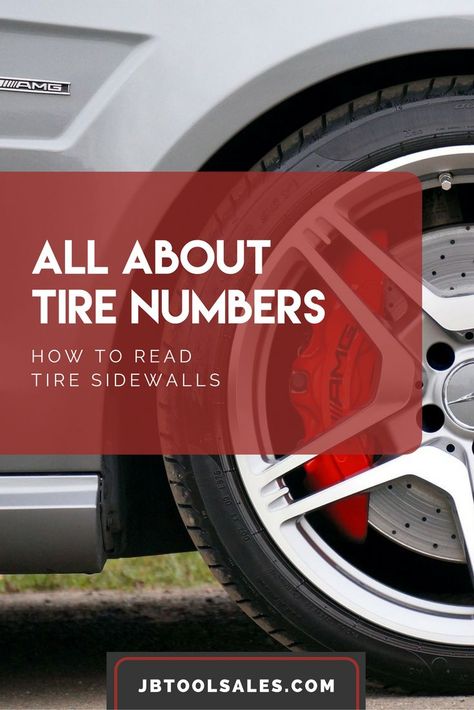
winter tirestyres
Next article
Media news2
Vladimir Gavrilov
Estimated reading time: 4 minutes
2909
Category: Service Auto
Each tire has its own life span. Usually, drivers try to change tires after the tread is worn out. On average, this happens after 4-5 years. However, not all cars are used so intensively, and some tires remain with deep grooves and lugs even after 5-7 years of operation.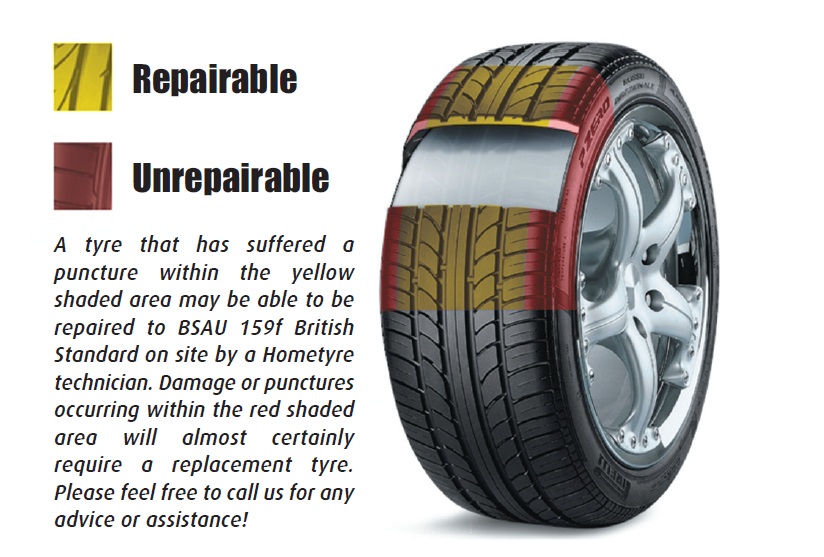 How long is it allowed to ride on such tires and what can happen to them on the way? nine0005
How long is it allowed to ride on such tires and what can happen to them on the way? nine0005
Tire rubber degrades over time, regardless of mileage. It is exposed to solar radiation, impacts from bumps, reacts with anti-icing reagents, tons poured onto the roads. The elasticity of rubber drops, cracks form, which become pockets of increased wear. Chemicals penetrate into them, which contribute to even greater damage to the already inner layers of the tire. Water and chemicals reach the cords, which first get wet, and then rot and break. nine0005
It usually takes 5-7 seasons until the tire reaches its extreme wear. Then the problems begin. A weathered coating cannot resist small sharp objects that show up from under the snow on the roads in spring. A small run over a piece of glass or a bent nail will result in punctures or cuts. The new tire resists them much better.
It's even worse when an old "hardened" wheel gets into a hole with sharp edges. Even with a small impact, the tire risks internal damage. The threads of the old cord are torn, the protective layer is crushed, and air seeps through the cracks in the rubber. A hernia does not form, but a long zone of damage appears, allowing air to pass in several places at once. nine0005
The threads of the old cord are torn, the protective layer is crushed, and air seeps through the cracks in the rubber. A hernia does not form, but a long zone of damage appears, allowing air to pass in several places at once. nine0005
It is useless to patch, but small holes can be repaired with flagella. Though they won't last long. Many air-permeable cracks are a direct reason for urgent tire replacement.
Typically, tire manufacturers define the service life of their products as 5-6 years. Michelin claims a 10-year warranty, Nokian does too. And the beginning of the service is not the date of sale, but the date of manufacture. Sometimes more than six months pass between these two events. nine0005
If a tire has been in storage for a whole year, it is still considered that its characteristics are no longer the same as those of a new one.
You can find out the age of the tire by the markings stamped on the sidewalls.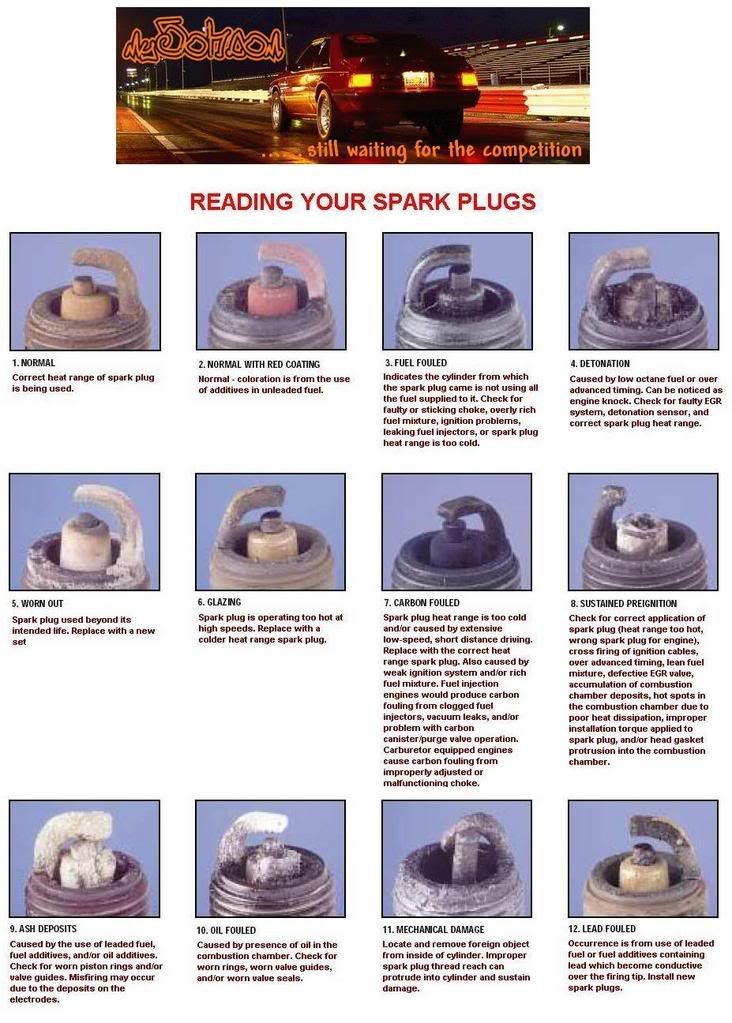 You can find a designation like "YYY2018". Here, the last 4 digits tell the customer that the product left the assembly line in the 20th week of 2018.
You can find a designation like "YYY2018". Here, the last 4 digits tell the customer that the product left the assembly line in the 20th week of 2018.
Since 2019, a new production control system has been introduced using DataMatrix codes. Using them, you can see when the goods were imported or produced, determine the country of origin, etc.
Requirements for the operation of winter tires are contained in the Technical Regulations of the Customs Union, as well as in the annex to the SDA entitled "On the admission of vehicles for operation and the obligations of officials to ensure road safety." Section 5.1 provides detailed requirements for the condition of tires.
The average groove depth of a new summer tire should be 8 mm. In winter, it is slightly larger and exceeds 10-12 mm. nine0005
The remaining tread depth of winter tires designed for use on icy or snowy road surfaces, marked with the letters M+S, M&S, M S must be at least 4 mm.